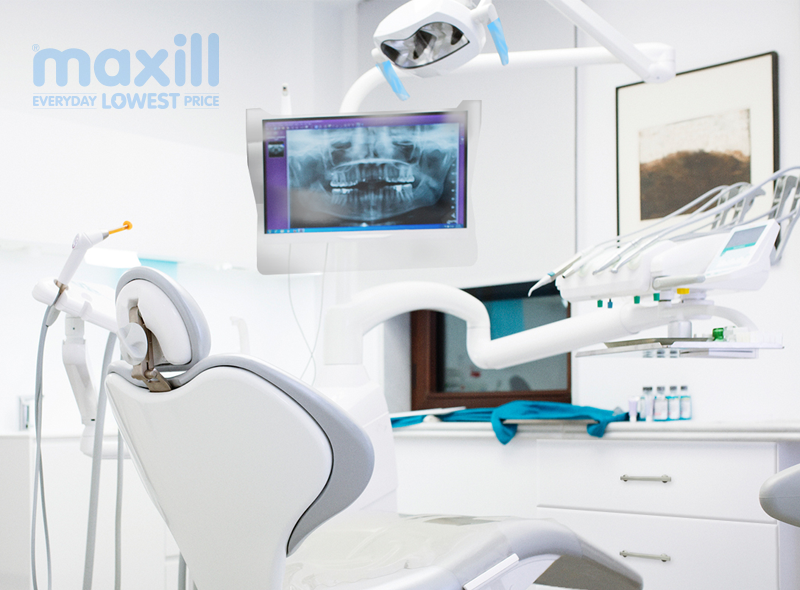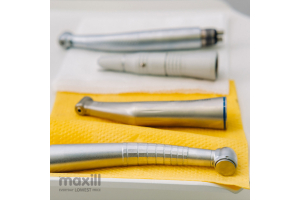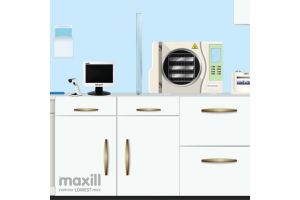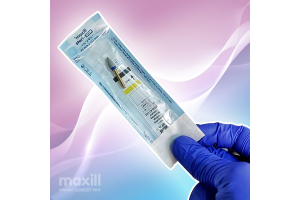What Is a Barrier in a Dental Office?

This explanatory article on barriers is part of a series of articles that were created to help new office managers and patients understand the uses and best practices of barrier products for infection control.
A barrier in a dental office can be defined as any material impervious to the clinical contact surfaces. Barriers come in various sizes that include clear plastic bags, clear or colored plastic adhesive sheets, clear plastic sleeves, embossed plastic sleeves, perforated plastic sleeves, clear plastic mold for keyboard and mouse, paper sheets with a plastic backing, paper sheets, paper bags with a plastic backing, dental dams, etc. These barriers are part of a risk management decision to be used on high-touch surfaces to mitigate cross-contamination from client to client.
- Clear plastic bags are the most common barrier and are often used to cover x-ray tube heads, electronic keyboards, barcode scanner kiosks, dental chairs, trays, etc. It is easily removed and disposable. However, a clear plastic bag can be challenging to handle due to its slippery nature. It can also be a source of cross-contamination if the appropriate cover is not selected. This is often seen on dental chairs where only the headrest is barriered and not the buttons of the chair.
- Clear or colored adhesive sheets are often called ‘sticky tape’ and as the nickname implies, they are popular as they provide a secure barrier that does not move or will not slip off. They are placed on overhead light handles, Panorex machine headrests, Panorex machine handles, bracket table, x-ray exposure button and dials, operator stool lever, etc.
- Clear plastic sleeves are used as a cover for radiography sensors, intra-oral cameras, curing lights, low and high-volume couplings, overhead light handles, etc.
- Embossed plastic sleeves are available for intra-oral cameras where one side is embossed with visible texture to alert the clinician the embossed side does not go toward the lens of the camera. The side of the lens is manufactured to be ultra-smooth to reflect and capture a clear image when taking an intra-oral picture.
- Perforated plastic sleeves are used on air-water syringes where a hole is already pierced in the sleeve to allow the air-water syringe tip to be positioned through the bag and still keep a secure seal around the elevated buttons of the air-water syringe. Some offices will also use these for the low volume evacuation creating a fitted barrier for the coupling and the intersection of the disposable saliva ejector as well as the backflow valve.
- Clear plastic moulds for the keyboard and mouse are a great idea for the fact they do not need to keep being removed as they offer a smooth surface to the electronic equipment to be able to disinfect the surface. The one issue with these plastic moulds is eventually they need to be replaced and a dental office should have a system to determine the replacement date/time frame.
- Paper sheets with a plastic backing aka the dental patient bib. No surprise the plastic backing prevents any water or debris from seeping through the client's clothing. There are also sheets available of different sizes to sit on the back counter in the operatory.
- Paper sheets aka tray liners used as a barrier to prevent items from direct contact with the tray itself. They are also used on the back counter in the operatory to prevent adhesives, acid etch, disclosing agents, etc from ruining the countertops. Paper sheets or better worded, paper face sheets are also available to be placed under rubber dams to absorb moisture and keep the client comfortable.
- Paper bags with plastic backing are typically present as the small headrest cover for dental chairs. As stated above, the correct headrest cover needs to be selected that matches the style of the chair. This cover is ideal for chairs with foot controls and smooth surface buttons.
- Dental dams are a great protective barrier for client safety to not swallow materials or gross debris from the handpiece treating the tooth/teeth. They also keep the client’s tongue away from the rapid rotations of a sharp dental bur.
Should a dental handpiece have a barrier?
NO! Dental handpieces and motors are heat tolerant and semi-critical therefore MUST be sterilized. Read the fine print of the MIFU of the handpieces and motor to see the manufacturer's statement on needing to sterilize. Barriers do not replace sterilization or disinfection.
Are there barriers for the safety of the clinician?
Yes, that is where barriers and personal protective equipment branch off into their own categories. Although gloves, masks, face shields, gowns, bouffant caps, lab jackets, and even a uniform are a barrier to protect the dental professional, they are considered personal protective equipment. Dental barriers for clinical contact surfaces control the spread of infection by preventing the exchange of saliva, blood, and other body fluids.
How do barriers protect against cross-contamination among staff?
Although barriers help protect against cross-contamination from client-to-client, they also do the same for client-to-clinician and clinician-to-clinician. An example of client-to-clinician transfer is a handheld mirror touched by the client, not disinfected, and then handled by the clinician. An example of clinician-to-clinician is a computer keyboard and mouse, if the clinician touches the keyboard and mouse after a previous clinician used and touched them with soiled gloves and did not disinfect the surfaces, that keyboard and mouse is a major fomite to transmit pathogens for the next clinician or for the same clinician!
Self-contamination! This is why it is important to have set policies for all the high-touch surfaces in the office, which ones are barriered, disinfected, handled with soiled gloves, and off limits to be handled with soiled gloves. Since microorganisms cannot be seen by the naked eye and since ‘saliva is not red’, it must be assumed that many of these surfaces are contaminated OR there must be strict policies to train staff to adhere to best practices. This includes proper hand hygiene for both washing and disinfecting.
How Do Barriers Control the Spread of Infection?
Barriers are encompassed in the risk management portion of the theory and practice of routine and additional precautions. In routine practice, EVERY client is treated as being potentially infectious therefore mitigating any possible chance of spreading pathogens. Dentistry has been following routine precautions for years and this starts the moment the dental appointment is made with the receptionist screening for possible symptoms that would trigger a re-schedule of an appointment.
Unlike a hospital setting where ill patients must be seen, in dentistry, an ill patient is rescheduled until they are better. If a client with symptoms must be seen, the office then transitions over to additional precautions and adds extra layers of safety. These layers are, social distancing, seating the client asap on arrival, closed doors, fallow times, n95 style mask vs surgical mask, scheduling client at end of the day, clinician immunization, etc. Where do barriers fall into this discussion? No matter if the triage concludes the use of routine or additional precautions, dental offices use barriers on all required high-touch surfaces to fully control the spread of infection.
To the public, this translates that behind the scenes there are numerous steps that unfold between each patient to prepare the operatory for mitigation of risk of cross-contamination.
What Items In a Dental Office Could Be Covered?
A dental office can be an extremely sterile environment, but a few items cannot be disinfected or sterilized. These include dental chairs, utility equipment, x-ray imaging equipment, dental operating lights, curing light handles, intra-oral cameras, fluorescence oral cancer screening wands, dials and buttons on equipment, etc. The manufacturer of equipment and any dental device that cannot be sterilized has detailed instructions to follow for reprocessing using barriers and disinfectant.
How Often Should You Change Barrier Coverings?
EVERY client. A barrier on high-touch surfaces is not meant to replace disinfection or sterilization. Having a busy dental office is no reason to not change the barriers, nor is a tight sundries budget. As the barriers become contaminated, they themselves become a fomite to spread infection To prevent this from happening, it's essential to change barrier coverings every time a patient is seen. Doing this can minimize the chances of spreading infection throughout your clinic and keep everyone safe, including you.
- Dental clinics must change barrier coverings after every patient to prevent infection. This is important for EVERY procedure not just the high-risk surgical visits as there can be just as large of a microorganism flora in saliva as there is in other body fluids. EVERY client intervention is a risk for the spread of disease.
- Bacteria can quickly spread through the air if the barrier is not kept clean. By changing the barrier coverings every patient, you will be preventing the spread of infection, ensuring patient safety and clinician peace of mind for operating a safe environment for the client, yourself, and fellow clinicians.







